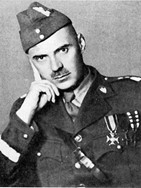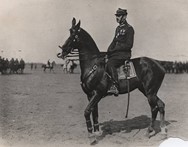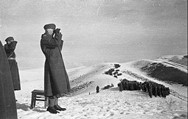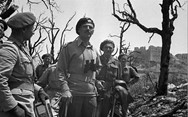General Władysław Anders
Born Krośniewice-Błonie, Kingdom of Poland, 11th August 1892 and died in London, England, 12th May 1970.
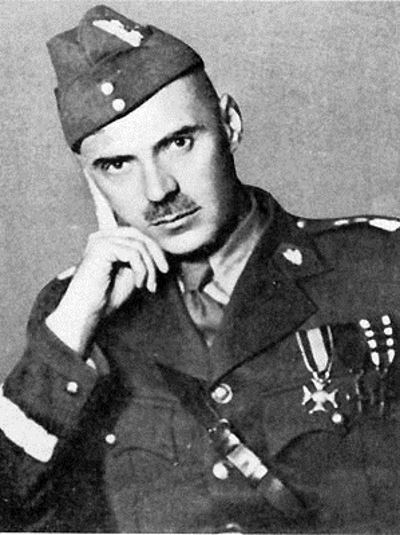
Anders was born on 11 August 1892 to Albert Anders and his wife Elizabeth, née Tauchert, in the village of Krośniewice, Błonie, near Kutno which at that time was part of the Russian Partition. He was baptized as a member of the Protestant Evangelical-Augsburg Church in Poland; but while being kept in Soviet prisons he made a promise that if he survived and regained strength in his legs (he was seriously injured) he would convert to Roman Catholicism. He did survive, and did indeed convert.
While an undergraduate at Riga Technical University Anders became a member of the Polish student fraternity Arkonia. As a young officer, he served Tsar Nicholas II in the 1st Krechowiecki Lancer's Regiment during World War I, later joining the Polish Army and again serving in cavalry as a commanding officer in 15th Poznań Lancers (Ułans) Regiment.
Colonel Anders was chief of staff of the government forces during Piłsudski's May Coup of 1926 and was bitterly opposed to President Wojciechowski's decision to surrender to the rebels. Unlike the government's top Commander Tadeusz Rozwadowski, he avoided persecution by the Sanacja regime that assumed power after the coup.
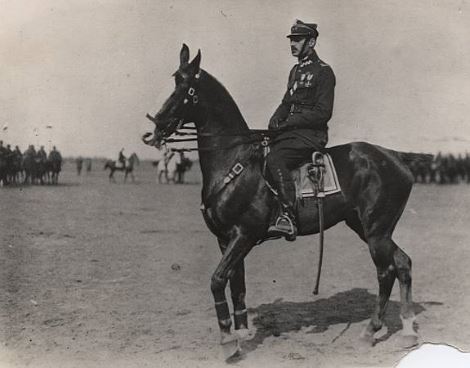
Anders was in command of the Nowogród Cavalry Brigade (Nowogródzka Brygada Kawalerii) at the time of the outbreak of World War II on the 1 st September 1939. The Polish forces were forced to retreat to the east by the Nazi Forces only to learn that the Soviets had invaded on the 17th September 1939. During the fighting and retreat Anders was wounded a number of times. He was later taken prisoner by Soviet forces and was jailed, initially in Lwów and later in Lubianka prison in Moscow. During his imprisonment Anders was tortured.
Shortly after the attack on the Soviet Union by Germany on 22 June 1941, Anders was released by the Soviets with the aim of forming a Polish Army to fight alongside the Red Army. The Polish Government reached an agreement with the Soviet Union (the Sikorski-Maisky Pact of 17 August 1941), confirmed by Joseph Stalin in December of that year. Stalin agreed to invalidate the September 1939 Soviet-German partition of Poland, declare the Russo-German Molotov-Ribbentrop Pact of August 1939 null and void, and release tens of thousands of Polish prisoners-of-war held in Soviet camps.
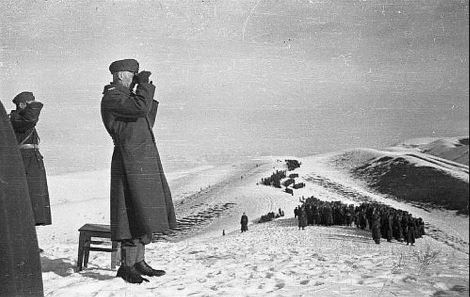
Observing Polish troops in the south of the Soviet Union
Pursuant to an agreement between the Polish government-in-exile and Stalin, the Soviets granted "amnesty" to many Polish citizens, from whom a new army (the Polish II Corps) was formed under General Władysław Anders. However, continued ill-treatment from the Soviets as well as shortages of weapons, food and clothing, led to the eventual exodus of Anders' men – known as the Anders Army – together with a sizeable contingent of Polish civilians via the Persian Corridor into Iran, Iraq and Palestine. Here, Anders formed and led the 2nd Polish Corps, fighting alongside the Western Allies, while agitating for the release of Polish nationals still in the Soviet Union.
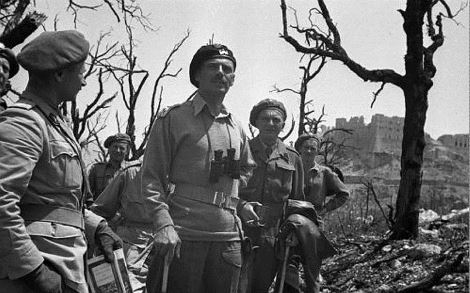
In front of the ruined monastry on Monte Cassino, May 1944
Anders was the commander of the 2nd Polish Corps in Italy 1943–1946, capturing Monte Cassino in the Battle of Monte Cassino.
After the war the Soviet-installed communist government in Poland deprived him, in 1946, of Polish citizenship and of his military rank. Anders had, however, always been unwilling to return to a Soviet-dominated Poland where he probably would have been jailed and possibly executed, and remained in exile in Britain. He was prominent in the Polish Government in Exile in London and inspector-general of the Polish forces-in-exile. After the war Anders wrote a book covering his thoughts and experiences. An Army in Exile was published originally by MacMillan & Co., London, in 1949. The book has been recently re-issued under the same title.
He died in London on 12 May 1970, where his body lay in state at the church of Andrzej Bobola, where many of his former soldiers and families came to pay their last respects. He was buried, in accordance with his wishes, amongst his fallen soldiers from the 2nd Polish Corps at the Polish War Cemetery at Monte Cassino in Italy. After the collapse of Communist Poland in 1989, his citizenship and military rank were posthumously reinstated.
